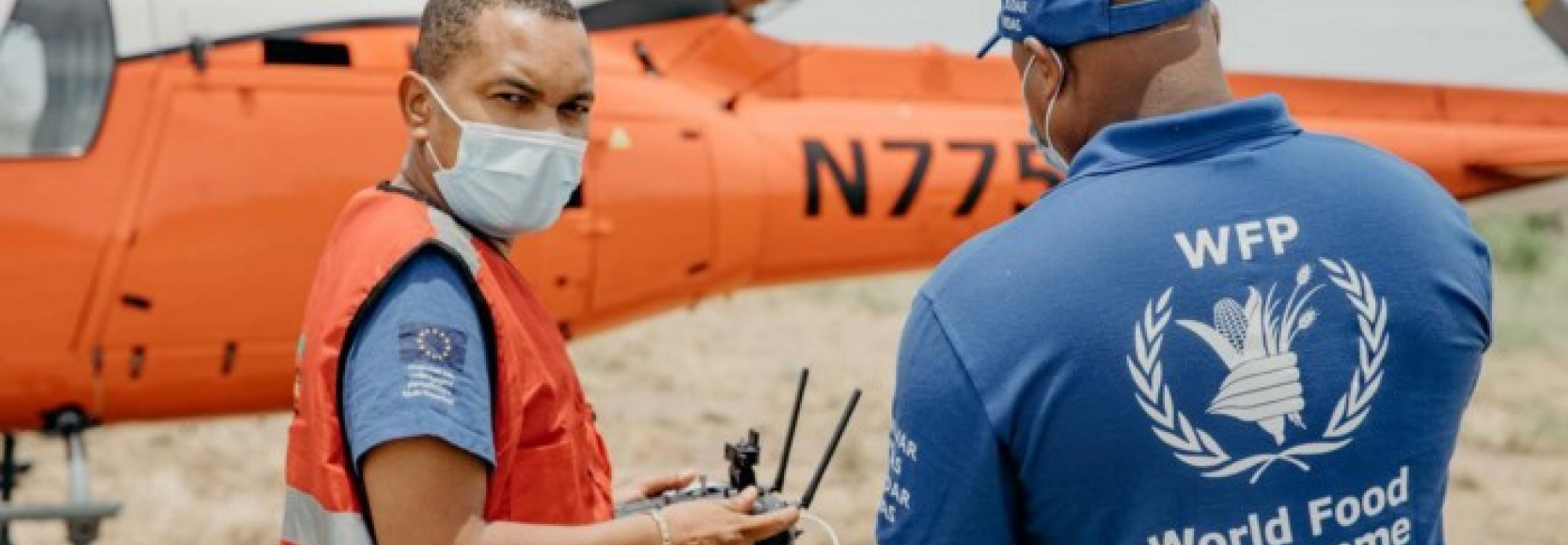By Enrica Porcari, WFP Chief Information Officer and Director of Technology
The man with his eyes on the camera is Antonio Beleza, Deputy Director of Mozambique’s National Institute for Disaster Management and Risk Reduction (INGD).
His intense gaze matches the situation 72 hours after tropical storm Eloise barrelled through Mozambique’s Sofala province, bringing floods and winds of up to 130km/h to a region still recovering from cyclone Idai, one of the worst disasters ever to hit the southern hemisphere.
Drone controls in hand, Antonio uses aerial photos to check preparations for more than 5,000 people who are expected to arrive at a displacement camp in Guara-Guara after losing their homes. And these are safe, experienced hands. Because when Idai hit in 2019, Antonio’s team was already leading the Mozambique government’s drone response with support from WFP, following two years of collaboration that included 30 hours of training with ten different drone systems.
In other words, the use of drones begins long before a disaster happens — four years in the case of Eloise. That’s vital time not just for training, but also to engage civil aviation authorities must be engaged, to get communities familiar with what a drone is and does, and to address strict data protection and privacy principles that must always be respected.
Emergencies are increasingly unpredictable, intense and layered with a growing climate impact. So, the work with Mozambique’s government is helping WFP and the wider humanitarian community seize an opportunity to move the needle on drones in emergency preparedness and response.
To keep strengthening local preparations ahead of the next crisis, we must be open to rethinking how we work — just as Antonio and the INGD team have done by creating a drone cell that can deploy at a moment’s notice.
WFP will keep learning from their experience and be ready to support anytime, anyplace. But we want more success stories like that and we’re not alone. That’s why, with generous support from the UK Foreign, Commonwealth and Development Office, WFP has launched drones.wfp.org. Anticipating the growing threats from famine and climate change, the platform will help the humanitarian drones community develop their responsible and ethical use in areas such as disaster assessment, in-air connectivity and crop monitoring.
Technology and innovation are great enablers of humanitarian action, when backed by collaboration among experts with a deep understanding of the potential benefits and the risks. If that sounds like you, then please take a look at the new site and contact drones@wfp.org to learn more about the Technical Working Groups.
![]()

